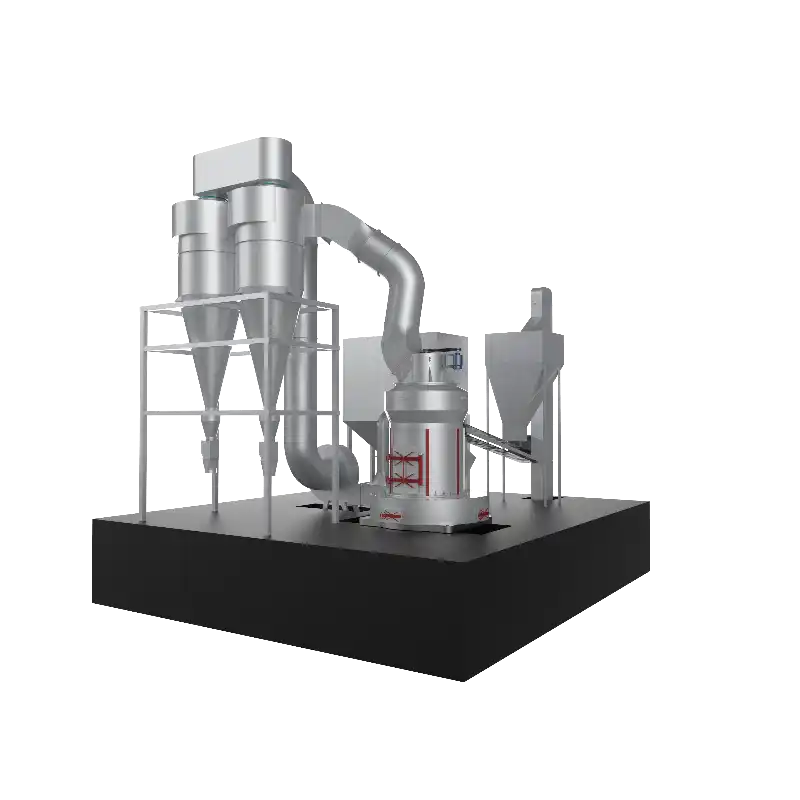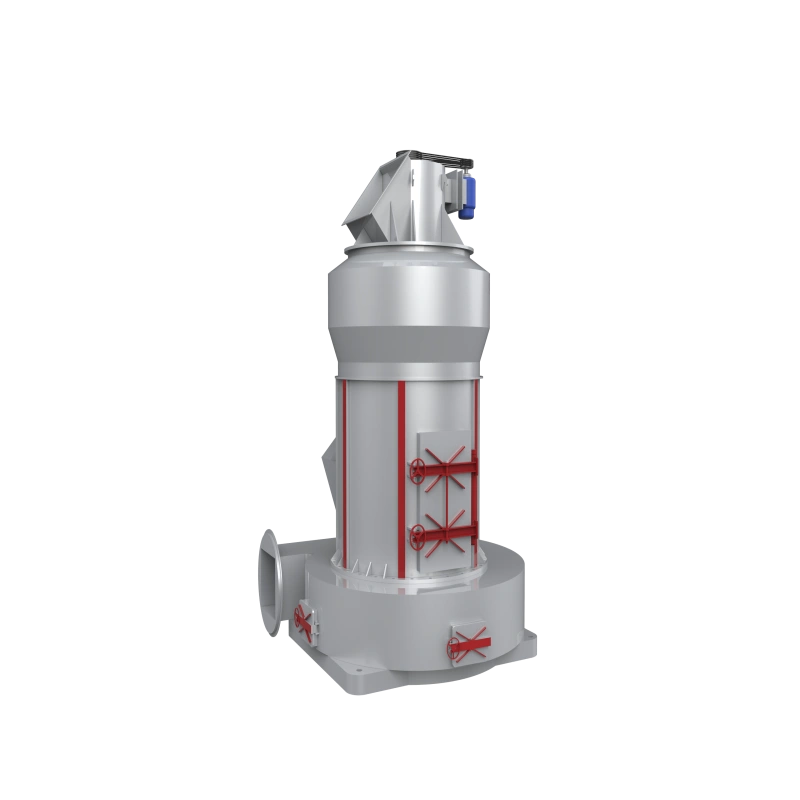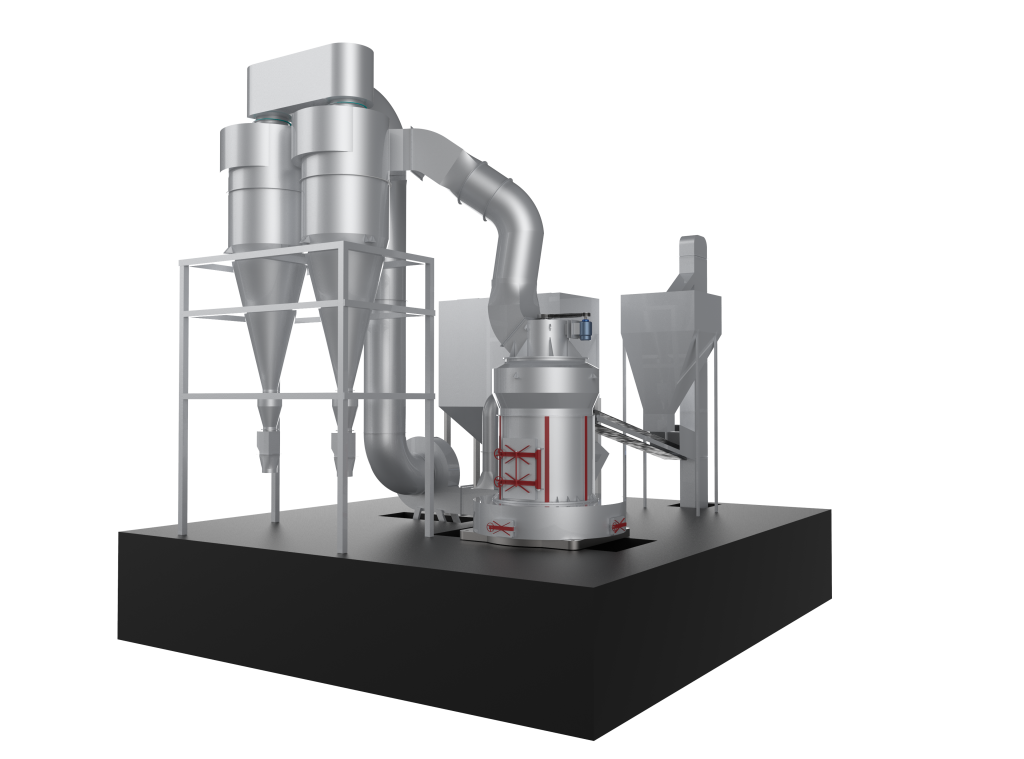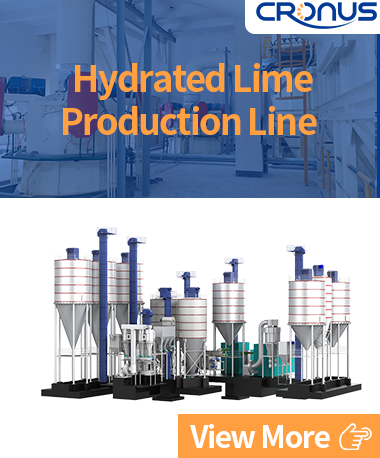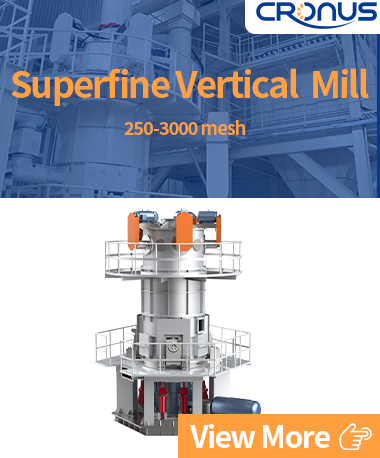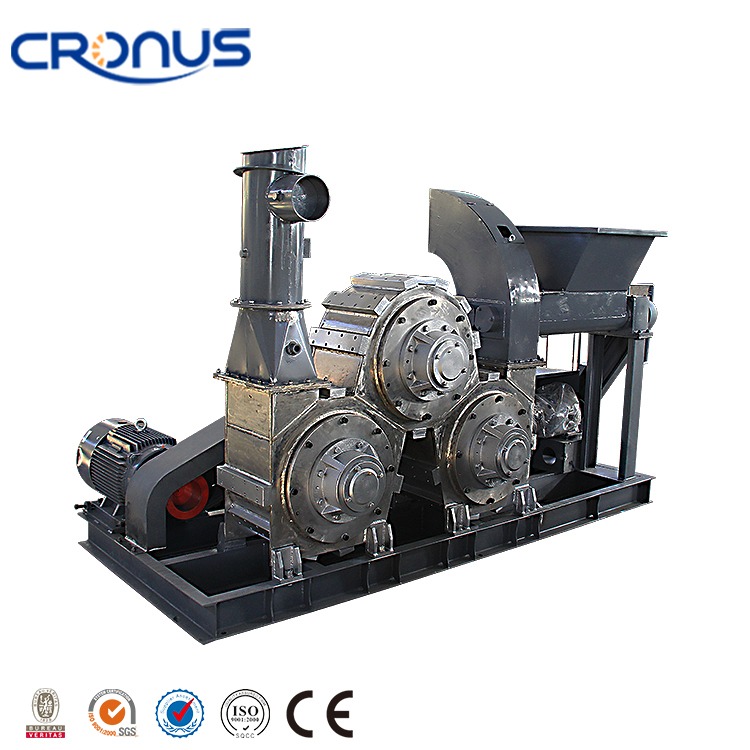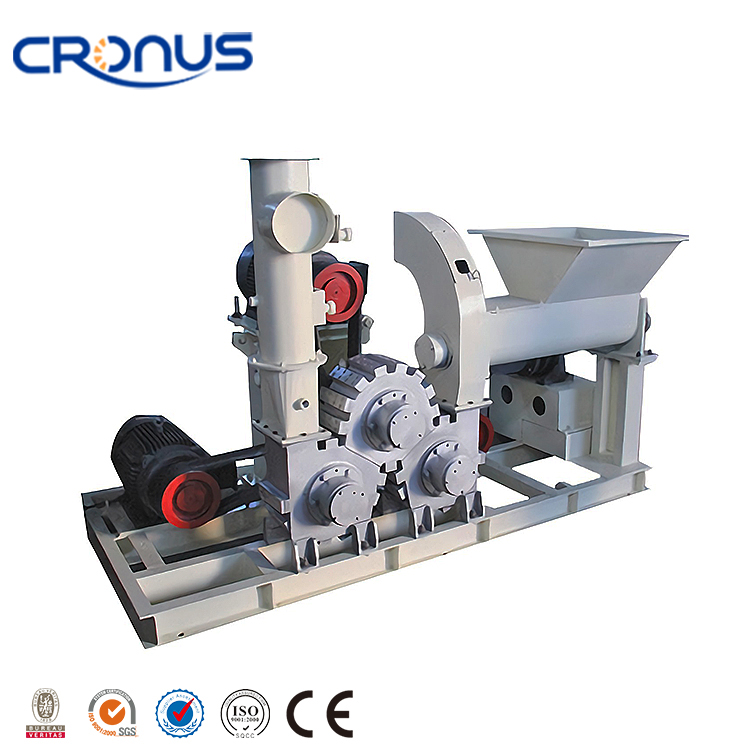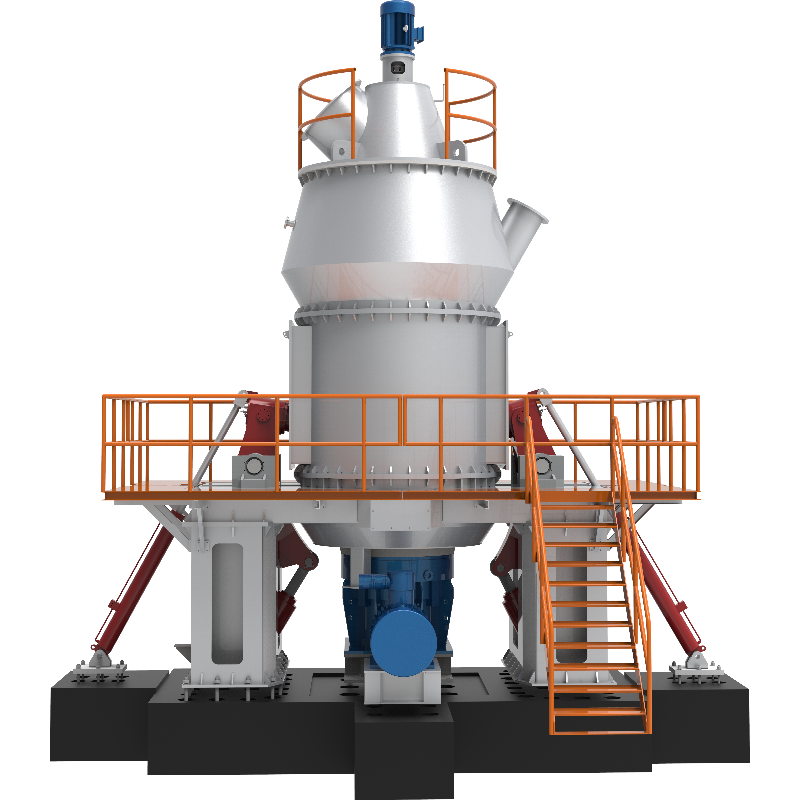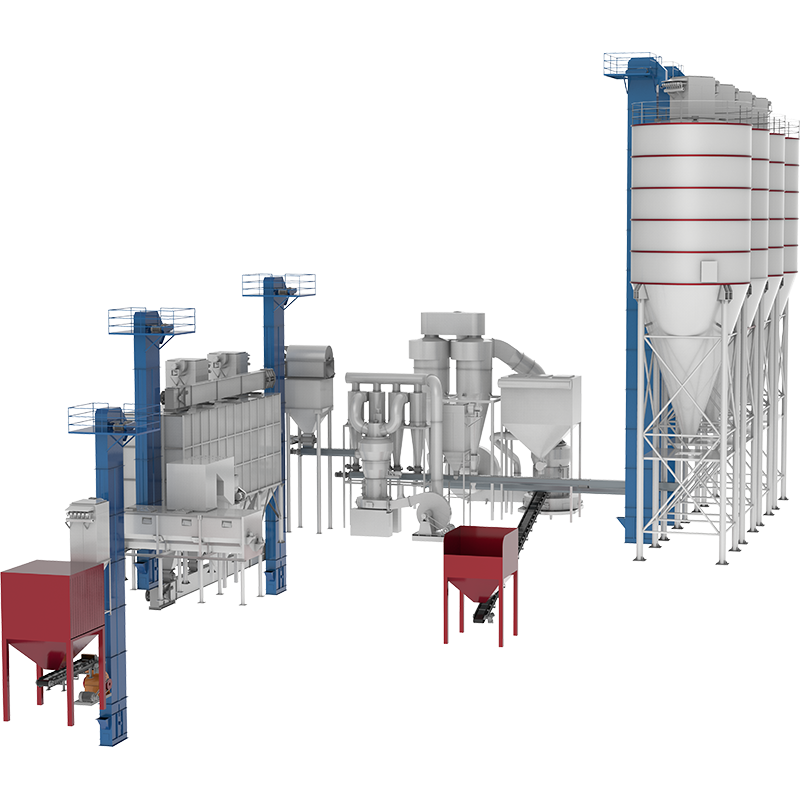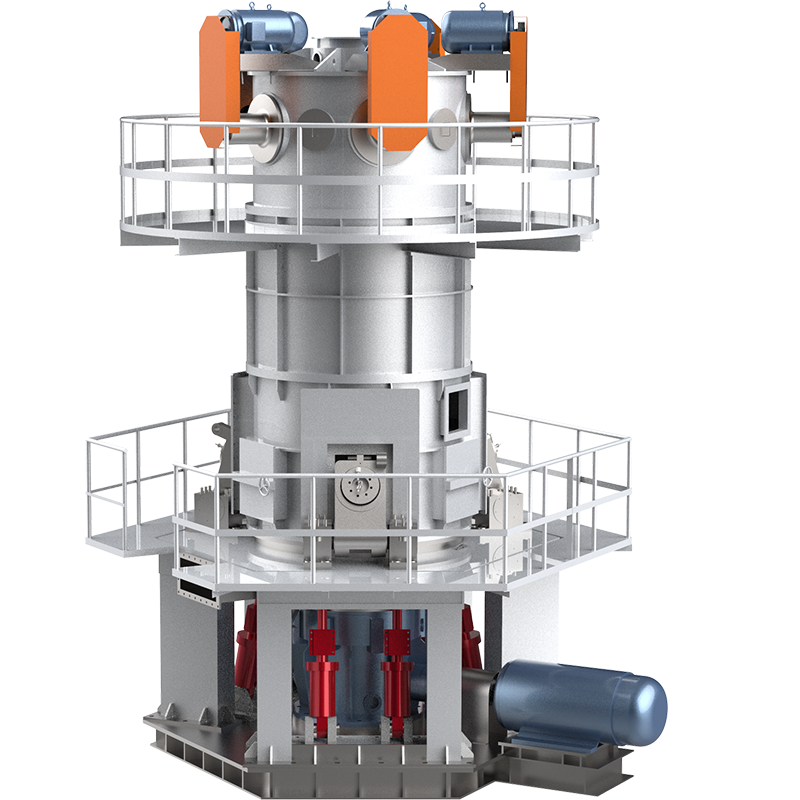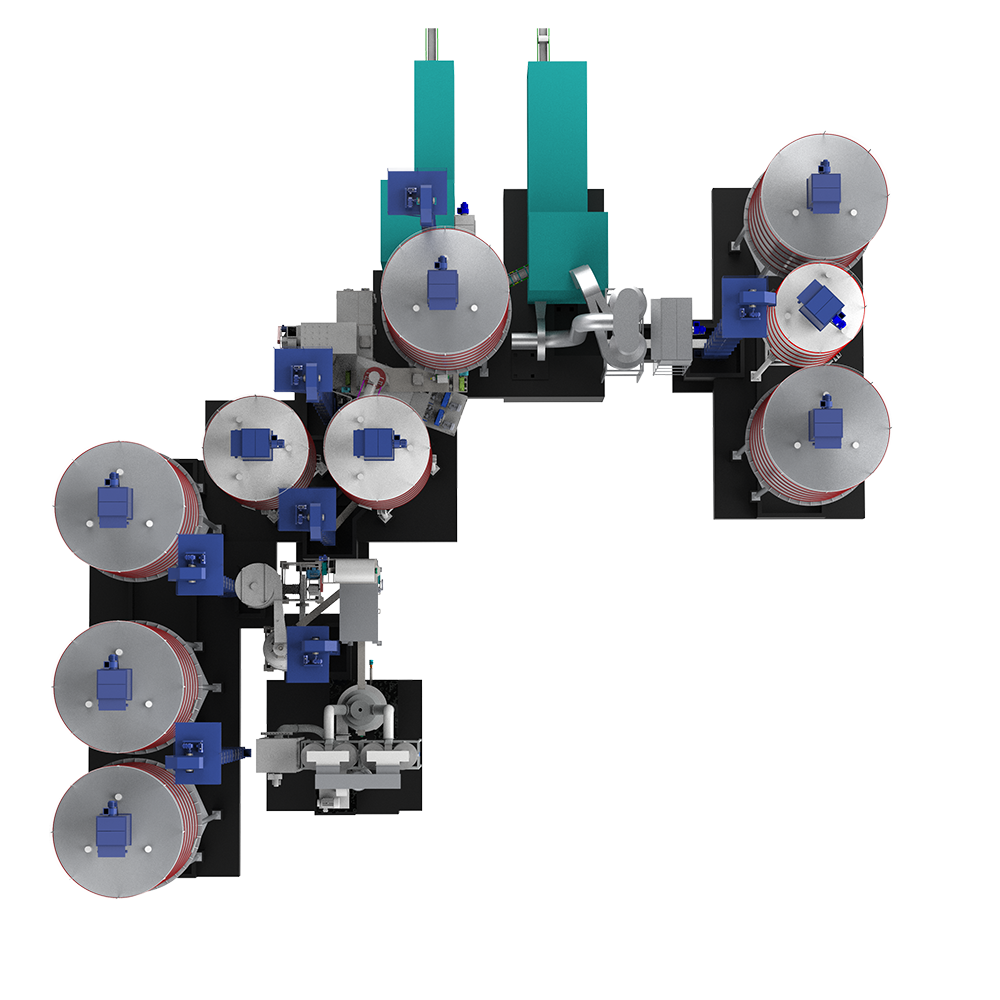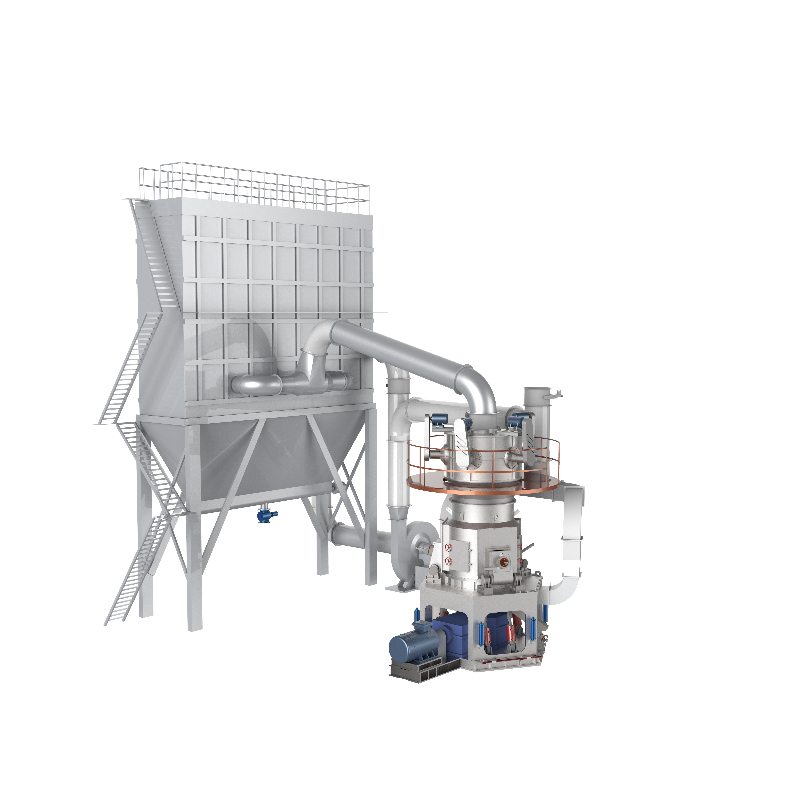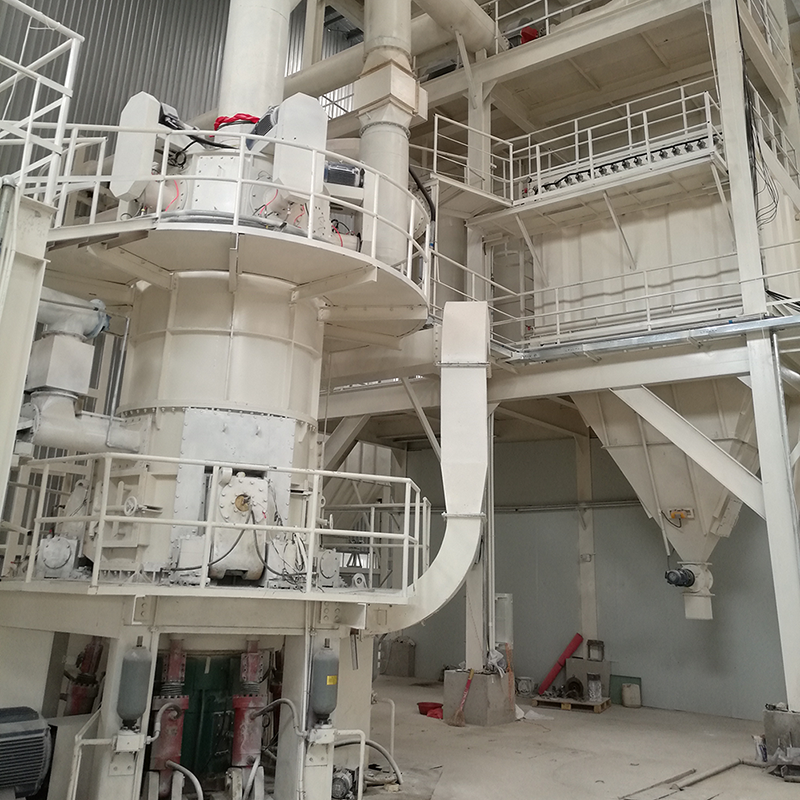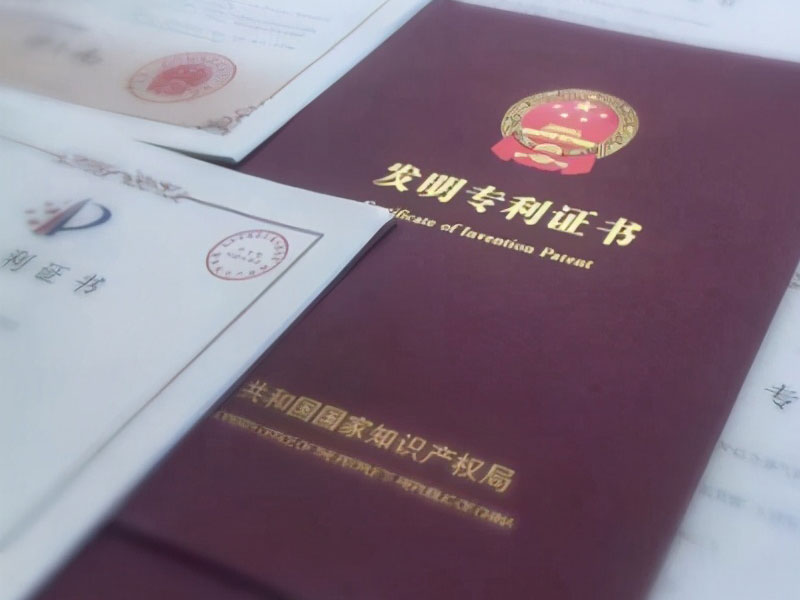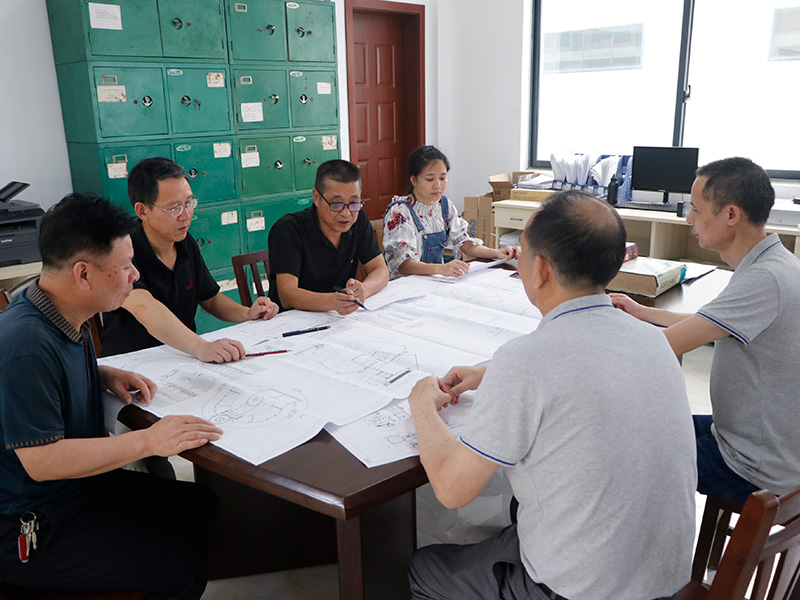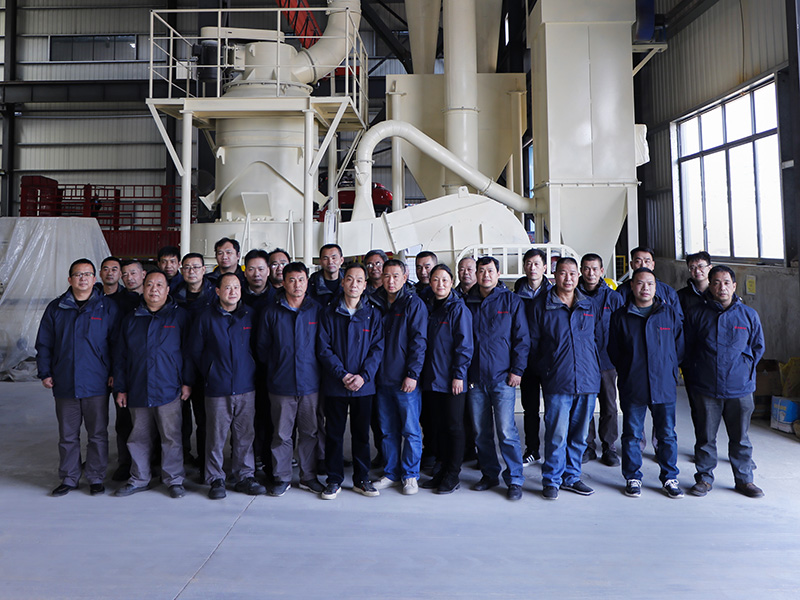Feed particle size: ≤30mm
Production capacity: 8-176 tons/day
Finished product particle size: 0.044-0.173mm
Applicable materials: malachite, bluestone, dolomite, limestone, calcite, barite, talc, gypsum, quartz, bentonite, etc.
Introduction of small superfine powder raymond mill
The small Raymond mill is a smaller grinding equipment. Its weight is only one-third of that of an ordinary mill. It is easier to transport than an ordinary mill and has a lower transportation cost. Its new design and three-dimensional structural model create a more convenient and flexible working method. Therefore, it is favored and welcomed by the chemical, construction, building materials, glass, environmental protection, water conservancy and other fields.
Working principle of small superfine powder raymond mill
The small superfine powder raymond mill mainly relies on the mutual extrusion between the roller and the grinding ring to complete the material grinding operation. When working, the transmission device drives the roller shaft on the plum blossom frame to rotate rapidly, and the grinding ring that acts on the grinding roller is fixed. When the material is fed into the machine body by the feeding device, a scraper is also installed at an angle at the front end of the roller to continuously feed the material into the grinding area between the grinding roller and the grinding ring.
Since the grinding roller is in orbital motion along the central axis, it continuously rolls outward and opens, gradually approaches the grinding ring, and finally presses against the grinding ring. At this time, the material sandwiched between the grinding roller and the grinding ring will be squeezed and ground, thus completing the entire grinding work.
Advantages of small superfine powder raymond mill
Wide range of adaptability, flexible and convenient
Although this equipment is small in size and weight, it can grind various non-metallic ores such as gypsum, fluorite, talc, basalt, granite, bluestone, etc., and will not be affected by the hardness, humidity and other characteristics of the material. It is very flexible and has a wider range of applications.
Uniform particle size
The equipment is designed as a vertical structure, which greatly reduces the footprint and makes operation easier. The material ground by this equipment has uniform particle size and good shape, does not contain needle-like structure, and has a very high screening rate. The finished product can meet various needs of customers.
Safe and stable operation, low-carbon and environmentally friendly
Equipped with explosion-proof safety protection devices, it is not easy to have dangerous accidents such as dust explosions during operation, and the operation process is safer and more stable; in addition, the equipment is also equipped with dust-proof devices and silencers, so there will be no dust and noise pollution problems, and the low-carbon and environmentally friendly effect is better
Reliable quality and long service life
The main components are made of wear-resistant solid materials, which are three times more wear-resistant than ordinary components. The quality is quite reliable and the service life is extended by more than three times.
In the field of grinding, have you been looking for a device with excellent performance, high efficiency and stability? TheSmall Superfine Powder Raymond Mill provided by Cronus is your ideal choice!
Whether you are in the mining, chemical, building materials and other industries, Cronus's Raymond mill can bring a qualitative improvement to your production process. If you have a Small Superfine Powder Raymond Mill demand, please feel free to contact us.
